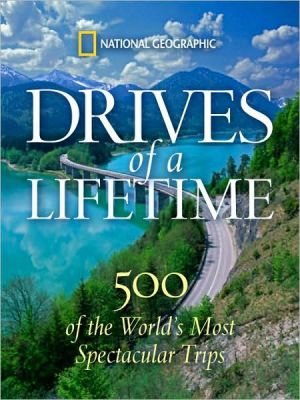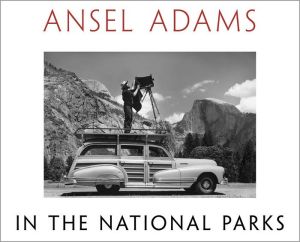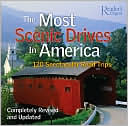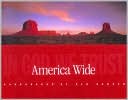Steel Pier, Atlantic City: Showplace of the Nation
It was aptly called the "Showplace of the Nation" and it was all that and more.\ \ For much of the 20th century Steel Pier in Atlantic City was the center of American entertainment on the East Coast.\ \ Nearly every big-name entertainer - from John Philip Sousa and his band to Tommy Dorsey, Benny Goodman, Frank Sinatra and the Rolling Stones - played there. And nearly every form of entertainment that could be imagined took place at Steel Pier: high wire acts, people being shot out of cannons,...
Search in google:
It was aptly called the "Showplace of the Nation" and it was all that and more.For much of the 20th century Steel Pier in Atlantic City was the center of American entertainment on the East Coast.Nearly every big-name entertainer - from John Philip Sousa and his band to Tommy Dorsey, Benny Goodman, Frank Sinatra and the Rolling Stones - played there. And nearly every form of entertainment that could be imagined took place at Steel Pier: high wire acts, people being shot out of cannons, the Diving Bell that took you to the sea floor.There was the Marine Ballroom, and there was rock and roll. There were circus-like animal acts - "Rex The Wonder Dog," a 70-ton Whale, Fortune-Telling Parakeets, Wild Animal Babies, and Boxing Cats.Steel Pier was an incredible combination of Broadway, Miami, Las Vegas, Hollywood, Barnum and Bailey, and a state fair - "All For One Low Admission." Crowds were drawn from the entire country. The renown of Steel Pier was so great that A-list performers chose the Pier over other venues.This all-in-one entertainment Mecca, novel in its day, has never been matched, not even at latter-day theme parks. Where else could you take the entire family for a day and see the World of Tomorrow, Sousa and his band, a bear on a bicycle, the High Diving Horses, take a ride below the sea, spend the evening in the marine ballroom, and see a movie - all for one ticket? It was a colossal offering of escape, popular culture, fun and fantasy - experienced on a great pier reaching out into the sea.Author Steve Liebowitz begins with a brief history of seaside entertainment piers, and competing piers in Atlantic City (such as Million Dollar,Heinz, and Steeplechase) and carries us through incarnations of Steel Pier into the late 20th century.Filled with 227 photographs and other images (many in color), this large-format book chronicles the rise of one of America's most remarkable entertainment venues - "A Vacation In Itself," as the advertising slogan went. For three-quarters of the last century there was nothing like it. The SandPaper almost as much fun as a day on Steel Pier, and as close as you can get to it in the 21st century.
from Chapter 9: World Famous Diving Horses\ \ It wasn't just an icon of Steel Pier - it was the premier icon of Atlantic City: the image of a woman on a horse, bareback . . . the horse appearing to fly through the air, its legs stretched out in a downward plunge.\ It was one of the longest-running acts in show business history, lasting over eighty years, and it was really quite simple. A horse would be led by a handler up an incline ramp until it reached the top - as high as sixty feet above the Pier for some dives - where a female\ rider in a bathing suit would be waiting. She would climb on and then the horse, when it was ready, would suddenly "dive" into a large pool of water waiting below. That was it. But it really was much more than just that. People who witnessed it in person have never forgotten\ it, even to this day.\ \ * * * *\ \ . . . if you were the sort who liked to "steal the show," then climbing aboard a diving horse during the heyday of the act was the place for you.\ "It was an integral part of Steel Pier operation - probably the most famous part of it," was James Hamid's opinion in a 1980 story in the Press of Atlantic City. "Jazz drummer Buddy Rich used to say that he'd have a ballroom full of people watching them set up, the announcement would be made that the horse was about to dive, then they'd be playing before no one."\ Michael Brecker, a tenor saxophone player from Philadelphia, noticed the same thing in 1971. "I used to play gigs in Steel Pier, opposite the horse jumping into the water," he told At the Shore magazine years later. "We'd have to interrupt the show to watch the horse jump. They would light up a sign announcing when thehorse would jump and everyone would go watch.\ "One time, with jazz-rock group Dreams [August 1971], I was playing a solo with my eyes closed. And when I opened them, the audience was gone. For an instant, I thought it was my playing. But then I was informed by a band member that they had lit the jumping horse sign."\ As for many others, for Steel Pier visitor Gwenn Embury it was the Diving Horse that made the biggest impression: \ The High Diving Horses were always my favorite. I must have seen at least six of them over the years. They each had their own style of diving. One would wait a good five minutes before jumping. He would hold his head up and watch the sea gulls fly by. Some dove with their front legs straight out, while others tucked up their legs as if they were going over a jump. One horse would twist in the air and on his side, making it dangerous for his rider.\ The riders - all women - would suffer one or two broken bones a year. Most of the injuries came from getting out of the way of paddling hooves. They made it look easy, but it wasn't. Years ago, a rider by the name of Sonora Carver went blind by an impact with the water. The jump was sixty feet at that time, but was then lowered to forty.\ Another horse - I think his name was Patches - drew quite an audience. After making so many jumps, he no longer waited for his rider. He would charge up to the tower and take a running jump off the diving board, leaving the rider behind. A couple of the girls tried to leap on him as he flew by, only to be left sailing through the air mount-less. One day, he got up so much speed he almost overshot the pool. Needless to say, they retired him.\ * * * * *\ The late Gene Hart, former "Voice of the (Philadelphia) Flyers" hockey team, was very familiar with Steel Pier. His father, Charlie, worked as a talent scout on the Pier, managed the Water Circus and was also a producer in New York. As a roly-poly ten-year-old, Gene became a member of the Diving Hawaiians in the early 1940s. His father then gave him the job of stagehand and comedy diver, where he became well known for his pranks. Hart also filled in as master of ceremonies for Jack Montez at times, gaining experience for his future Philadelphia Flyers Hall of Fame career as a sportscaster. He met his future wife, Sarah Detwiler, the second summer she was a diver with the horses. During a 2004 interview, she looked back fondly at those times:\ My grandparents lived offshore and I was up around Steel Pier, and I made an acquaintance with the groom who took care of the horses. I was very positive on why I would be a good choice to dive. To me, it seemed like a good summer job. So before I left to go back to college in Florida, I sent a note to the groom and he gave it to Lorena Carver . . . I had been doing water ballet down at the University, and the horses intrigued me. I finally received a letter from her and told her that I would come up. I looked over the facility and met Lorena Carver and she said, "I know you can do this." No preparation at all. Went right up to the top and wondered if I was going to make it, if I would live. I was a little nervous about it, but I did the dive.\ I didn't regret that I was doing it, but it was a little scary at first. I was never afraid or had a fear of horses, heights or diving. This was in the late 1950s and I was only eighteen years old.\ There were at least four horses that would dive every day, but Dimah was my favorite. He would hesitate before he dove, and his head would bob up and down.\ I can still remember Jack Montez saying, "Ladies and gentlemen, prepare yourselves for the thrill of a lifetime. We present the Carver Steel Pier High Diving Horse!" There was recorded music for all those acts. \ I would go up first and the horse followed me. The groom would send the horse up the ramps by itself. The trainer was introduced first, then the rider on the stage, then I'd quickly put the helmet on, got ready and ran right up there as soon as I could. Then the horse was introduced on the stage and he would follow. And I'd be up there ready. \ My father-in-law invented an elevator for the horse later on. I had a ladder instead of running up the ramps. There was a little platform there with sides on it and a place for me to sit. Hanging from that was a six-foot incline, sort of like a diving board, and it put the horse on an angle. The horse would slide with his front two legs and then kick off. Because the horse would be on the angle, he would usually do a perfect dive.\ They went when they were ready. I can't say the groom would not try to encourage the horse a little bit by gently nudging or pushing, but he wouldn't dare do anything drastic. That would have upset me to no end. I wouldn't want to be on a horse that was agitated. My life depended on that horse doing that in a calm way, so there was no electrical devices or trap doors or anything like that during my time.\ Lorga (another diving horse) did take a long time. I remember Lorena Carver saying "Come," with carrots in her hand. But you waited. Sometimes it was five minutes.\ I had a horse named Gamal that would run up there and you were lucky you got on the horse. A couple times I was just barely on and I had to really be quick acting to get my position and hold on. We had little side handles and a harness. There was no stirrup; I was bareback. I used my knees to keep my weight back, so when we hung there momentarily, I wouldn't slip over the head. That would have been disastrous. That happened once in training and it was a miracle I didn't get a scratch.\ There was a thick roll of some kind of rubber padding that was somehow connected to this leather that was strapped under the belly of the horse like a saddle, but not that far back. I would be seated in back of that roll, which looked like the horse had a collar on. Then it had these two leather horizontal straps large enough for your hands to grab them, so I was holding on to this. Otherwise, it was up to me to use my legs. And the reason for that roll and those handles was so that I wouldn't go over the horse's head.\ The horse would hang there for a little while before kicking off. My job was to use my timing correctly and tuck in there real tight by his neck and tuck my chin down, and ride as close as I could to the horse.\ And then if the horse would go down in a way maybe a little too steep, that horse would roll, and then I would be under him. That's when you get hurt because there's thrashing legs.\ The tank was between ten and fifteen feet deep and about twenty feet across, not really large. It wasn't real deep but was lined with foam rubber with a silver, tough-type of material, so when the horse hits, he hits soft. The water was ample enough to break the speed and the weight. There was a very tough fiber matting for the incline for the horse to walk out of, and water never affected it.\ I would ride the horse until he got out of the tank. Lorena Carver would be standing on the stage of the tank and the horse knew to go to her, get his reward, and the blanket was thrown on quickly. That was the end of the act.\ You [the customers] could go in the stalls, along the walkway towards the end of the Pier and in front of the Ballroom, and see the horses through glass panels and how they were kept and fed. They were very well kept. They would ride the horses on the beach in the morning and they loved to go in the water and run along the waves.\ We didn't keep them if they didn't like the water. I would have noticed if there had been anything unkind because I love animals. They were never in any way hurt or disrespected. In fact, they were taken care of better than the riders were! The ASPCA gave us plaques of approval that were always on the dressing room wall. When Gene was in the show with me he'd bring me a towel, but the horse was the one that got the blanket! The horse was the star . . . .\ \ © 2009 Steve Liebowitz and Down The Shore Publishing Corp. All rights reserved.
\ Atlantic City Weekly“covers the great entrepreneurs and showmen who made the pier run through the vaudeville acts and stars of the ‘20s and ‘30s, the diving horse era, the big band era and the rock’n roll of the ‘50s and ‘60s.”\ \ \ \ \ Baltimore Jewish Times“an homage to Atlantic City’s best-known entertainment mecca.”\ \ \ Courier Post“celebrates Atlantic City’s magical Steel Pier.”\ \ \ \ \ Philadelphia Daily News“an exhaustively researched and impressively illustrated history of what, for a large chunk of the 20th century, was celebrated far and wide as ‘the showplace of America.’”\ \ \ \ \ The Philadelphia Inquirer“the Pier’s glory days live again in Steel Pier, Atlantic City, a big nostalgic history of the pier…”\ \ \ \ \ the Press of Atlantic City“chronicling the Pier’s history —- and more… in 263 picture-packed pages.”\ \ \ \ \ The SandPaper“almost as much fun as a day on Steel Pier, and as close as you can get to it in the 21st century.”\ \








![The Complete National Geographic: Every Issue Since 1888 [With DVD] The Complete National Geographic: Every Issue Since 1888 [With DVD]](/application/data/covers/63/52/9781426296352.jpg)